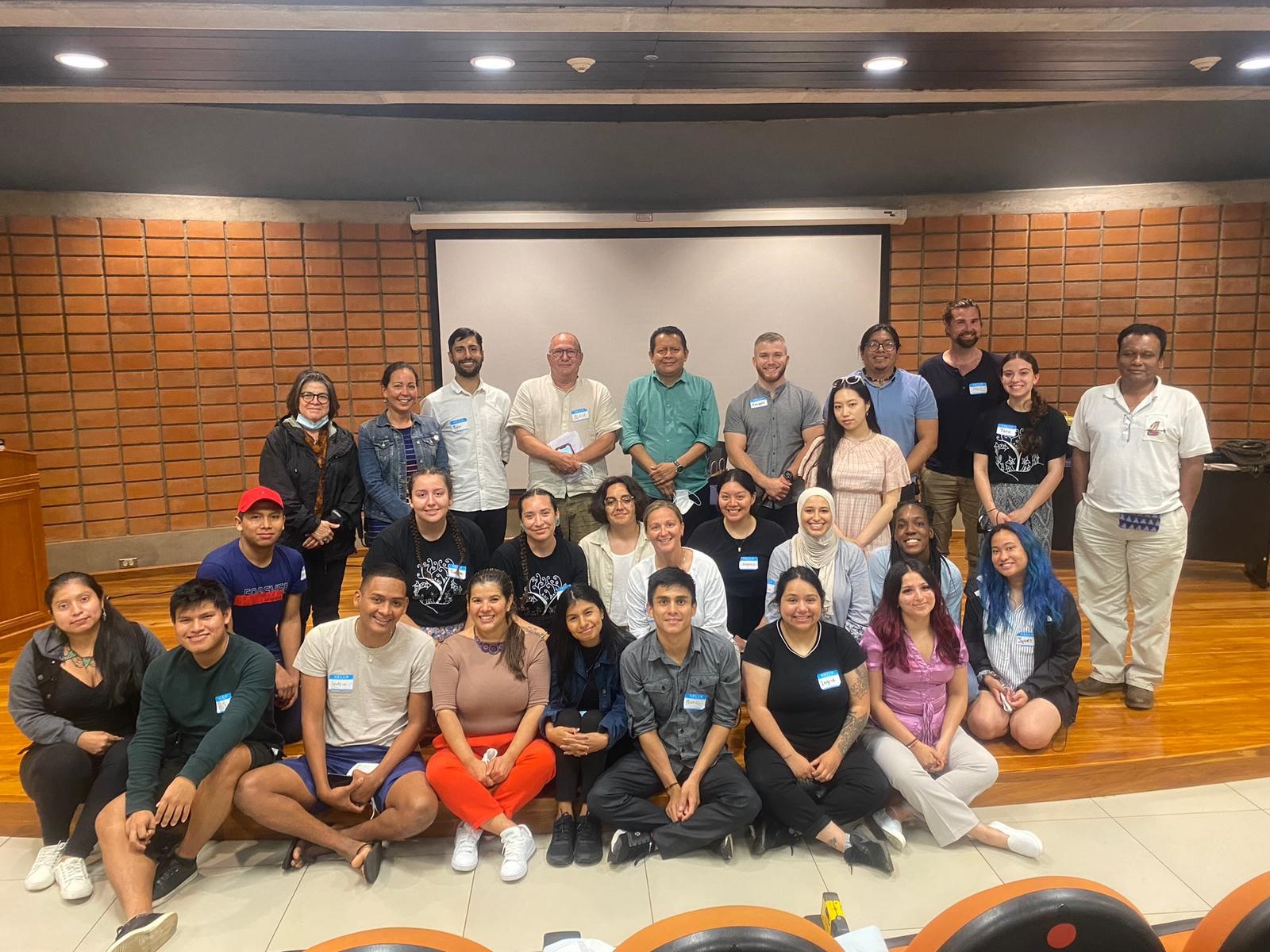By Alexis Bornyk

Photo of: Alexis Bornyk and Cristian González Gómez
Nation to Nation learning and sharing.
Hola!!
I recently got the opportunity to travel to Costa Rica with my University of Toronto Scarborough class to learn about UNDRIP from both the Canadian and Costa Rican experiences. Being an Indigenous person this learning opportunity was a once in a lifetime experience for me to meet and learn from other Indigenous Nations outside the territories in which I have lived. To connect and relate with Indigenous peoples that live far away from my homelands but at the same time have experienced similar struggles to myself and my community.
Reflecting on this trip is hard to put into words because it was such a spiritual and physical experience that you cannot always explained on paper. A key theme that kept coming up for myself on this trip was the importance of community and always being in a position of learning. Along the way I met so many amazing people that pushed me to reflect, learn, follow my curiosity and always remember your actions in work or personally may affect those around you. These are lessons that can only be learned in an experiential education environment.

Mynr Káshö’s meditation rock.
There were many moments on this trip that impacted myself in a way that will help me grow moving forward in life and in my studies. At the beginning of the trip we spent some time at TEC University listening to professors and professionals about their community participatory work with Indigenous peoples. It was inspiring to hear the effort being put in by the University staff to work with Indigenous communities around them and respect their ways of being as equal. The presentation done by UN representative Cristian González Gómez was able to put into perspective the importance of always involving and connecting with community even if it prolongs the process, the time and effort to involve Indigenous leaders is the only way forward. This resonated with me in a way that was validating my struggle to put in time to my community while also focusing on my studies. Sometimes it is hard to justify taking time away from my studies but I now realize learning from my community while in university is crucial in keeping me grounded in my Indigenous worldview, helping me walk in the two worlds that exist in so called Canada.
Another experience I have reflected on and valued highly from this trip was being given the opportunity to go out and connect with the land in Costa Rica through the eyes of Indigneous peoples. This experience highlighted the importance of seeking out and learning about who’s land you are on when you enter new territory from which you are not familiar with. It is always important to understand the context of the land you are visiting and know the impact you will be having as a visitor of that land. Being able to go on a journey through the homeland of the Bribri such as seen in the picture below gave me a spiritual worldview of this land before I walked through the westernized version of Costa Rica, allowing me to think more critically about the UNDRIP implementations.
Lastly, an extremely special moment on this trip for myself was our visit to Asociación Kábata Könana, where we got to hear from extremely inspirational women about their organization of trade they had created. Trading goods and practicing the gift economy is a traditional practice of both the Bribri and Cabécar peoples but also of Indigenous nations around the world. I got to share with this group of Indigenous women that my nation is also trying to bring back trading practices. The bond we created through shared traditional practices led to a sacred moment of nation to nation trading between myself and Heylin. This moment has more meaning behind it then any ordinary trade between people, it’s a form of resistance from the norm that is capitalism. It is a form of mobilization for Indigenous peoples to be able to connect two nations from lands far away from each other in the way that used to happen before colonial contact. It reminds us how similar all Indigenous peoples are around the world.

Photo of: Alexis Bornyk and Heylin from the Asociación Kábata Könana
Traditional Indigenous trading at Asociación Kábata Könana. Porcupine earrings were traded for traditional seeds used for jewelry.
This experience has brought connection, community and new friendships into my life that was only made possible by the efforts of professors like Dani Kwan-Lafond who put in the work to create environments of learning like these for students. It is an extremely valued form of learning through experience for people like myself. While reflecting I realized more and more how grateful I was for everyday of this trip and the experience I got to share with everyone.

Personal reflection done by Alexis Bornyk and reflecting my relationship with the communities of TEC University peoples, Bribri peoples, Boruca peoples, Cabécar peoples, and the Asociación Kábata Könana.